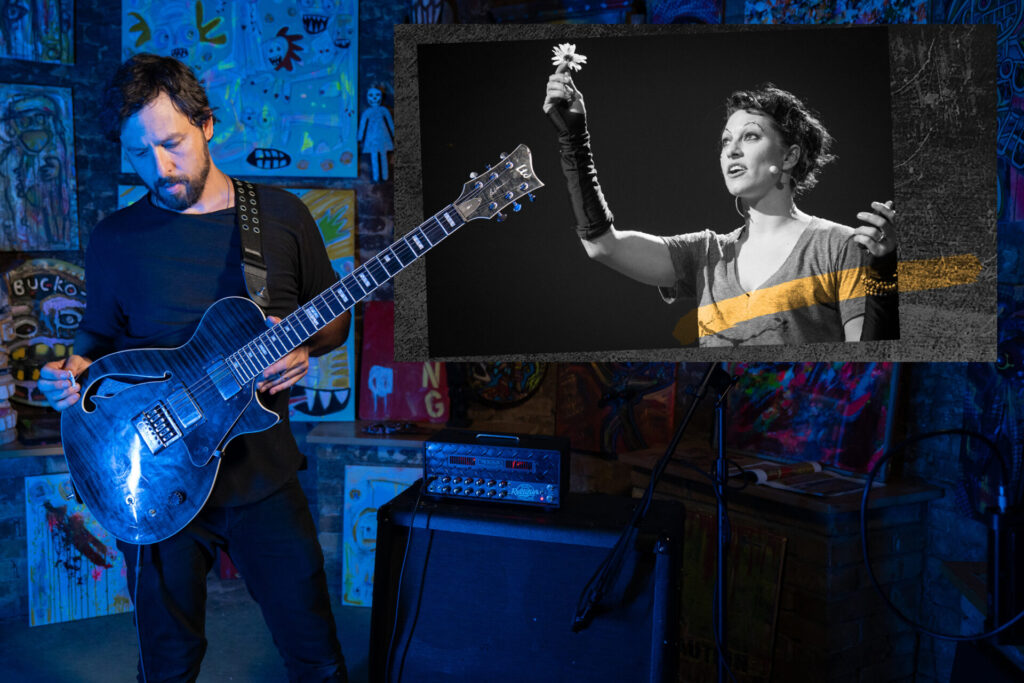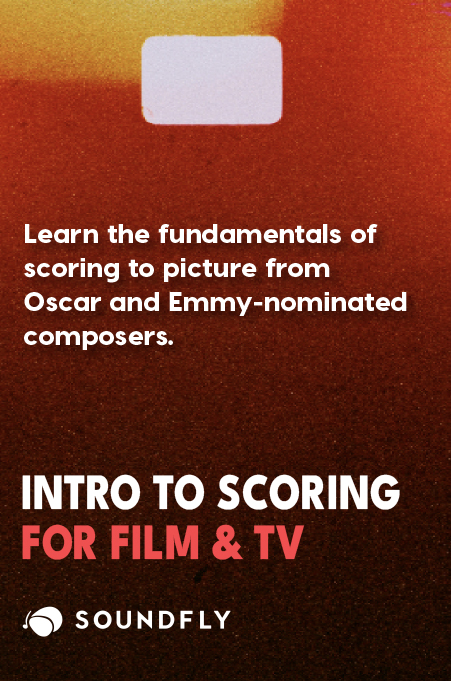+ This lesson is presented courtesy of Ben Weinman’s course, The Business of Uncompromising Art on Soundfly. Sign up to learn how to make a living as an artist without making compromises on your values.
Many of Ben’s strategies for audience growth and fanbase service over the years germinate from a theory put forward by the founding executive editor of Wired magazine, Kevin Kelly — a theory now commonly known as the “1,000 True Fans Theory.”
The basic concept is that you can make a good living if you have 1,000 hardcore fans who will each spend $100/year on you and your art.
“To make a living as a craftsperson, photographer, musician, designer, author, animator, app maker, entrepreneur, or inventor you need only thousands of true fans.” — Kevin Kelly
When Kevin says “true fans,” what he means are superfans — those die-hard supporters who will buy anything you put out into the world or travel a great distance to hear you play.
Making the Math Work
The $100 a year target is something of a generality rather than a concrete rule. Yes, $100 a year from 1,000 people is $100,000 a year in income, but you may have costs associated with that. Kevin Kelly also emphasizes that the 1,000 person rule only really works if you control the distribution of your products, because otherwise you’ll have to pay out a lot of that income.
Additionally, the 1,000 number is slightly arbitrary. You may have an easier time getting $50 a year from 2,000 people. You might need to earn more than $100,000 a year in incomes to cover your costs.
At the same time, you might also gain money from other sources, like from sometimes-fans, licensing, or sponsorships. The core idea is less about the specific numbers and more that you should:
- Focus on your superfans.
- Give them a regular way to give you money.
- Do that in proportion to your income needs.
+ Read more on Flypaper: “How to Price Out Your Music Services.”
Creating the Offerings
This may sound easy in theory, but getting someone to spend $100 a year on you isn’t easy. You need to offer enough to allow them to spend that much.
For example, streaming alone is not going to do it. In 2023, the average payout for a Spotify stream is around $0.0035. Earning $100 from a single fan in a year would require that they listen to you some 29,000 times. Not all that doable.
Plus, you might have to pay distributors and rights holders as well.
Given that, a core challenge of this model for musicians is figuring out what you can offer your true fans that they’ll find valuable enough to pay for. How can you piece together a business model, whether through merch, touring, subscriptions, or other byproducts of your music, that will allow people to spend money on you?
Case Study: Amanda Palmer

One of the most famous artists ever to implement this model has to be Dresden Dolls singer (and self-described “punk carbaret” innovator) Amanda Palmer. Amanda’s TED Talk on her approach to her career is well worth a watch.
She became internet-famous for a crowdfunding campaign on Kickstarter. She set a target of $100,000, but instead pulled in almost $1.2 million from some 24,000 fans (that’s roughly $50/person).
In her TED Talk, she discusses how she did it by building an environment of trust between her fans and herself.

She would couch-surf when she traveled. She would stick around after shows and spend lots of time with fans. She would invite local artists to come perform and join in. She gave her music away for free and asked for help in return. She put in the work to create a deep personal connection with her followers that made them want to support her.
The way she saw it was that by asking for help, she was also offering her fans an opportunity — an opportunity to feel seen, to be a part of something, and to contribute to something and someone they cared about. After her Kickstarter success, she even held a party for backers during which she stripped naked and let people draw on her body — an act she saw as an ultimate act of trust.
“Thank you, I see you.” — Amanda to the fan
“No one ever sees me. Thank you.” — the fan
+ Read more on Flypaper: “Ben Weinman: Building Your Tribe of Early Adopters (Video).”
Key Implications of This Model
There are a few key implications for us to consider about this model.
1. You need to own your fan relationships. If there’s a gatekeeper between you and your audience, it’s going to be much harder to talk with them directly and you may have to pay some massive cost to communicate with your fans. This model requires being able to go directly to your fans, whether over email, social media, Reddit, forums, or some other method.
2. You need to offer those who want it a way to go deeper into your world. If you’re not giving superfans a way to spend more on you, you’re leaving money on the table. Things like VIP access, special events, and limited edition merch are all ways to make sure you’re giving your die-hards a way to support you.
3. You need to stay close to your fans. The beauty of the modern world is that for every strange niche, there’s a passionate corner of the internet. As the artist, you need to remain “real” enough to know how to find that corner and reach the people in it.
4. True fans can exist anywhere in the world, and you should take advantage of that. It used to be the case that someone passionate for prog metal in a small town in the Midwest might feel totally alone. Now, that person can find a community around that interest online. You, the artist, have a role to play in helping connect those types of people.
5. Cultivating your true fans can be a full-time job on its own. Catering to the die-hards is a worthy endeavor, but it’s important to remember that it can take a lot of time and effort.
6. You don’t need to pursue this model to the detriment of all others. As stated above, you can earn some income from other sources, such as streaming or licensing, and still have the fallback of loyal fans that you can rely on year in and year out.
So how do you go about building this base of true fans?
If you’re already a Soundfly subscriber, feel free to share what you come up with on Discord.
Rev Up Your Creative Engines…
Continue your learning with hundreds of lessons on songwriting, mixing, recording and production, composing, beat making, and more on Soundfly, with artist-led courses by Kimbra, RJD2, Com Truise, Kiefer, Ryan Lott, and Ben Weinman’s The Business of Uncompromising Art.




